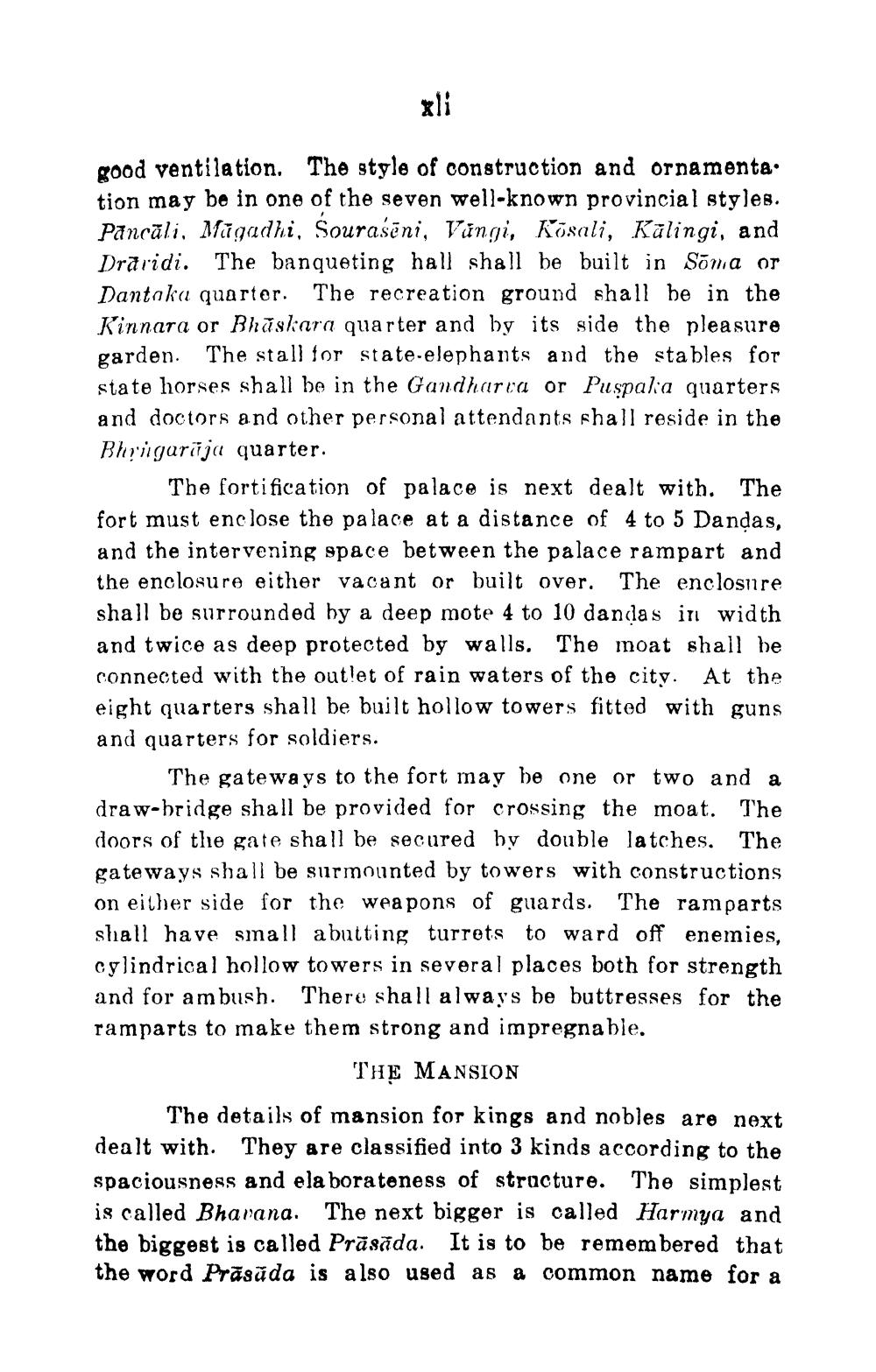________________
xli
good ventilation. The style of construction and ornamenta. tion may be in one of the seven well-known provincial styles. Pancali, Magadhi, Sourasēni, Vangi, Kōsali, Kälingi, and Draridi. The banqueting hall shall be built in Soma or Dantaka quarter. The recreation ground shall be in the Kinnara or Bhaskara quarter and by its side the pleasure garden. The stall for state-elephants and the stables for state horses shall be in the Gandharva or Puspaka quarters and doctors and other personal attendants shall reside in the Bhrigaraja quarter.
The fortification of palace is next dealt with. The fort must enclose the palace at a distance of 4 to 5 Dandas, and the intervening space between the palace rampart and the enclosure either vacant or built over. The enclosure shall be surrounded by a deep mote 4 to 10 dandas in width and twice as deep protected by walls. The moat shall be connected with the outlet of rain waters of the city. At the eight quarters shall be built hollow towers fitted with guns and quarters for soldiers.
The gateways to the fort may be one or two and a draw-bridge shall be provided for crossing the moat. The doors of the gate shall be secured by double latches. The gateways shall be surmounted by towers with constructions on either side for the weapons of guards. The ramparts shall have small abutting turrets to ward off enemies, cylindrical hollow towers in several places both for strength and for ambush. There shall always be buttresses for the ramparts to make them strong and impregnable.
THE MANSION
The details of mansion for kings and nobles are next dealt with. They are classified into 3 kinds according to the spaciousness and elaborateness of structure. The simplest is called Bhavana. The next bigger is called Harmya and the biggest is called Prasada. It is to be remembered that the word Prasada is also used as a common name for a




